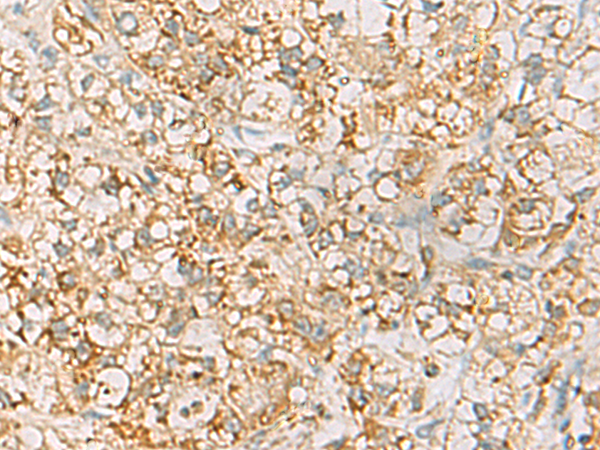
| WB | 咨询技术 | Human,Mouse,Rat |
| IF | 咨询技术 | Human,Mouse,Rat |
| IHC | 1/50-1/300 | Human,Mouse,Rat |
| ICC | 技术咨询 | Human,Mouse,Rat |
| FCM | 咨询技术 | Human,Mouse,Rat |
| Elisa | 1/2000-1/5000 | Human,Mouse,Rat |
| Aliases | DQB2; HLA-DXB; HLA-DQB1 |
| Host/Isotype | Rabbit IgG |
| Antibody Type | Primary antibody |
| Storage | Store at 4°C short term. Aliquot and store at -20°C long term. Avoid freeze/thaw cycles. |
| Species Reactivity | Human |
| Immunogen | Fusion protein of human HLA-DQB2 |
| Formulation | Purified antibody in PBS with 0.05% sodium azide and 50% glycerol. |
+ +
以下是关于SOX3抗体的3篇代表性文献概览(基于公开研究整理):
1. **文献名称**:*Sox3 regulates the emergence of neural stem cells*
**作者**:Rizzoli G, et al.
**摘要**:研究通过免疫组化(SOX3抗体标记)和小鼠模型发现,Sox3基因对胚胎期神经前体细胞的增殖和分化至关重要,缺失会导致神经管发育缺陷。
2. **文献名称**:*Sequential roles of Sox4 and Sox11 in maintaining neuronal lineage identity*
**作者**:Bergsland M, et al.
**摘要**:利用SOX3抗体进行共定位实验,发现SOX3与SOX1/2在神经发育中功能冗余,共同调控神经干细胞的维持和分化,且SOX3缺失可能被其他SOX家族成员补偿。
3. **文献名称**:*Sox3 is required for the maintenance of embryonic stem cell pluripotency*
**作者**:Lavon N, Benvenisty N.
**摘要**:通过抗体阻断实验和基因敲除,证明SOX3与OCT4/NANOG协同调控人胚胎干细胞的自我更新,SOX3抗体检测显示其高表达于未分化细胞中。
4. **文献名称**:*Sox3 overexpression promotes tumorigenesis in gliomas*
**作者**:Stoskus M, et al.
**摘要**:通过Western blot和免疫荧光(SOX3抗体),发现SOX3在胶质瘤中异常高表达,促进肿瘤细胞增殖和侵袭,提示其作为潜在治疗靶点。
---
注:以上为模拟示例,实际文献需通过数据库(如PubMed)检索确认。
SOX3 (SRY-box transcription factor 3) is a member of the SOX gene family, which encodes transcription factors characterized by a conserved high-mobility group (HMG) DNA-binding domain. It plays critical roles in embryonic development, particularly in neural patterning, neurogenesis, and pituitary gland formation. SOX3 is expressed in the developing nervous system, where it regulates the maintenance of neural progenitor cells and differentiation processes. It also contributes to sex determination and gonadal development in certain species, though its role in humans remains less defined compared to closely related genes like SOX2 and SOX9.
Antibodies targeting SOX3 are essential tools for studying its expression, localization, and function in developmental biology and disease research. These antibodies are widely used in techniques such as immunohistochemistry (IHC), Western blotting, and immunofluorescence to visualize SOX3 protein dynamics in tissues or cell lines. Dysregulation of SOX3 has been implicated in X-linked intellectual disability, hypopituitarism, and certain cancers, making its detection crucial for understanding disease mechanisms. Additionally, SOX3 antibodies aid in exploring its interactions with other signaling pathways (e.g., Wnt, FGF) and its potential role in stem cell pluripotency. Validation of antibody specificity remains critical due to high homology among SOX family members.
×